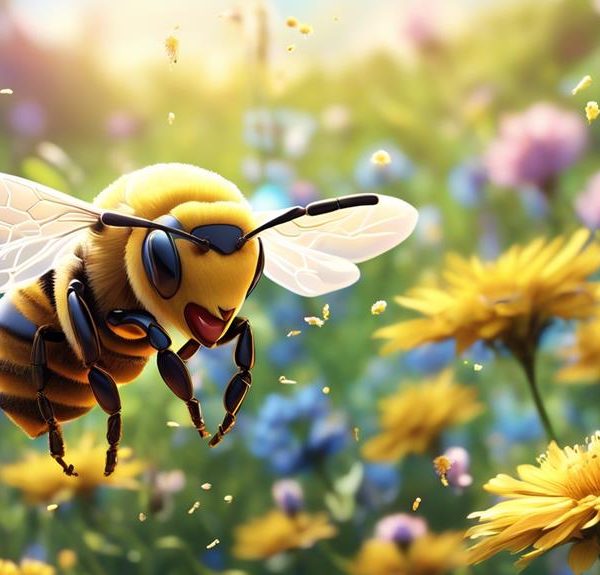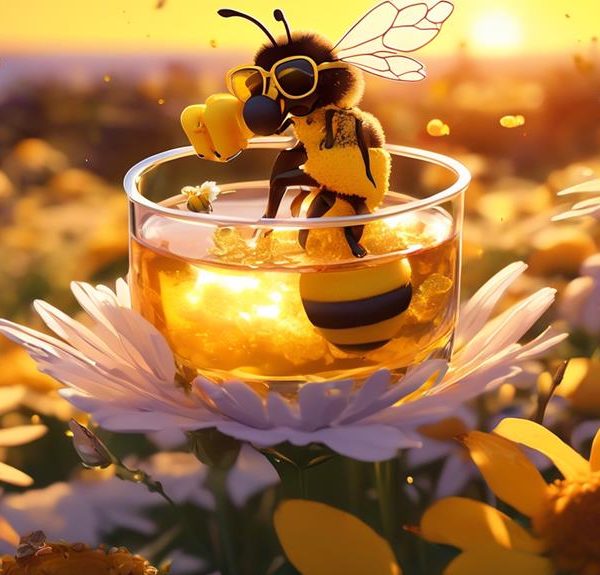Navigate the fascinating world of bees' sleep patterns, uncovering their unique rest rhythms and the surprising impact on their survival.
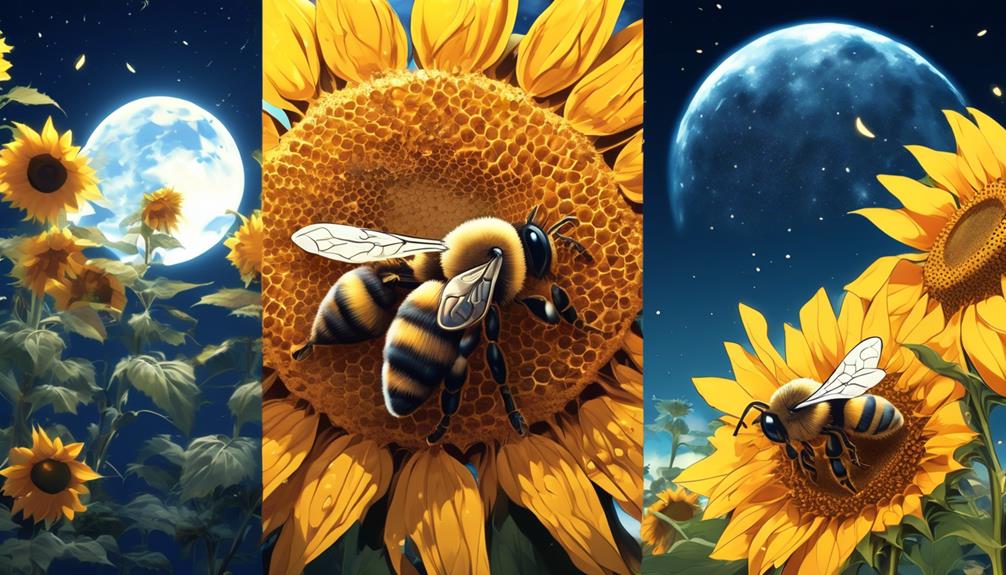
How Much Do Bees Sleep?
You know what they say, 'you snooze, you lose', but does this old adage apply to the world of bees?
As you delve into the world of these industrious insects, you'll find that their rest patterns are a study in themselves. Scientists have learned that bees, like humans, need their z's, but the quantity and quality of their sleep may surprise you.
But how much do they really sleep, and what does it mean for their daily activities and survival? Let's explore these intriguing questions, and perhaps you'll find that bees' sleep patterns have more to tell us than meets the eye.
Key Takeaways
- Worker bees, drones, and the queen all have specific sleep patterns.
- Bee sleep is governed by a circadian rhythm or biological clock.
- Bee sleep is consolidated and doesn't have REM and non-REM phases.
- External factors such as temperature and age influence bee sleep patterns.
Understanding Bee Behavior
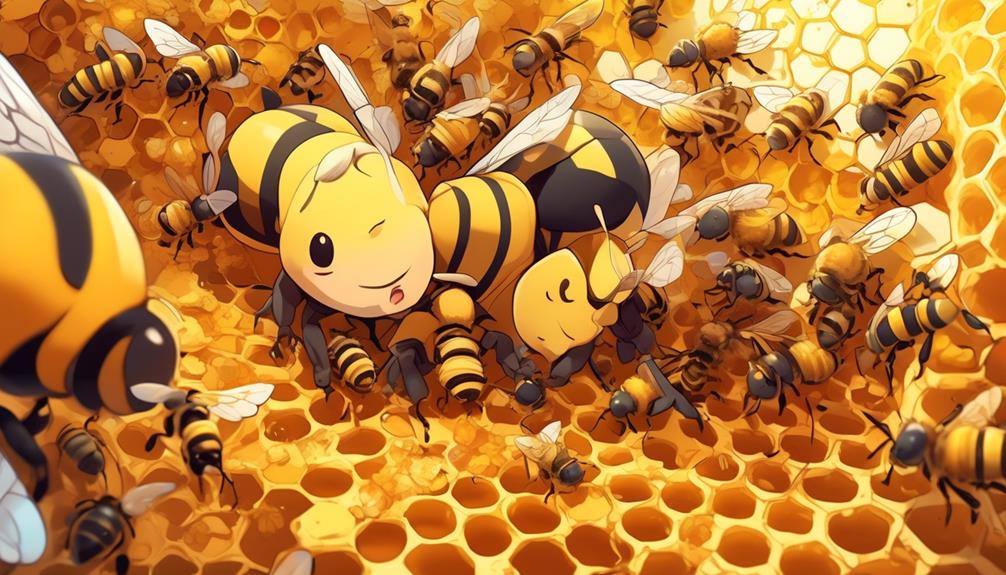
To truly comprehend how much bees sleep, you'll first need to delve into their unique behavioral patterns and societal structure. Bees are eusocial insects, meaning they live in highly organized colonies, each with specific roles. You'll find worker bees, drones, and a single queen bee in each hive, all working harmoniously to survive and thrive.
Worker bees, the largest group, have numerous duties. They're tasked with foraging for food, caring for the brood, and tending to the queen. With such a demanding schedule, you'd think they'd have little time for sleep. Surprisingly, studies have shown that, just like humans, bees require substantial sleep to function effectively.
Drones, whose main role is to mate with the queen, also have specific sleep patterns. They adhere to a 'night owl' schedule, remaining awake during the day and sleeping at night.
The queen, on the other hand, has a more sporadic sleep schedule, fitting in short naps throughout the day and night.
The Science of Bee Sleep
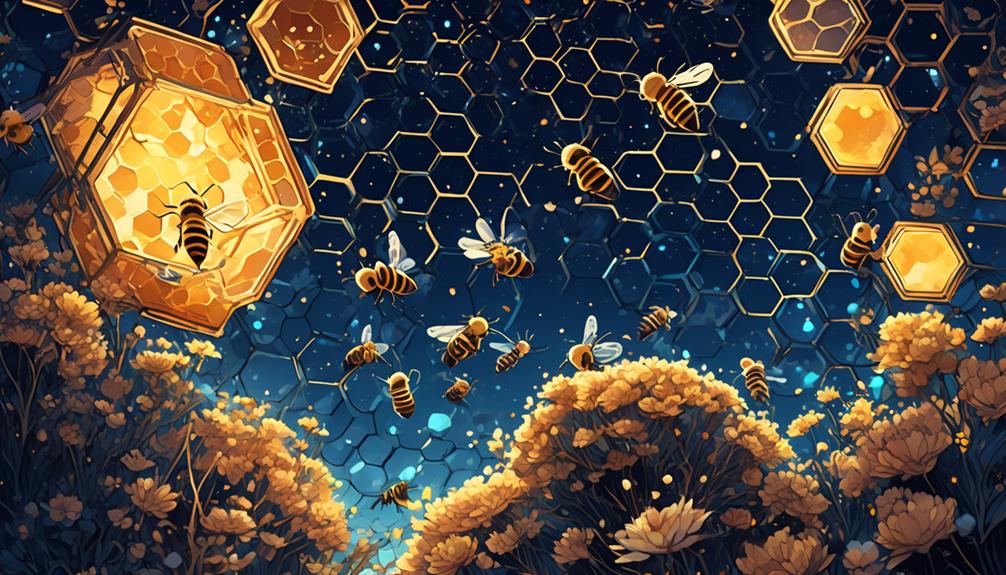
Delving into the science of bee sleep, you'll find it's a fascinating field that intersects biology, neuroscience, and entomology, with recent studies revealing intricate sleep patterns and cycles that are crucial for these insects' survival and productivity.
Much like humans, bees experience periods of deep sleep and lighter sleep, with their antennae drooping during deep sleep stages.
These patterns aren't random, but follow a circadian rhythm or biological clock that synchronizes their sleep schedule to the environment. This rhythm is governed by genes and external cues like sunlight, which you'll see if you observe a hive's activity over 24 hours.
At night, worker bees often cluster together, their movements slowing as they enter sleep states. This isn't merely rest, but a time for memory consolidation and learning enhancement, as studies with honeybees have shown. Alterations in these patterns, perhaps due to environmental stressors, can disrupt their cognitive functions, affecting their ability to communicate, navigate, and collect food.
In essence, the science of bee sleep underscores the essential role of sleep in maintaining not just individual health, but also the colony's overall functionality and resilience. Understanding this could have profound implications for bee conservation efforts.
Bee Sleep Vs. Human Sleep

You might wonder how bee sleep compares to human sleep, given that both species follow similar patterns of deep and lighter sleep, regulated by an innate circadian rhythm. However, there are some stark differences between the two.
Bee sleep isn't segmented into REM and non-REM phases like human sleep. Instead, bees experience a single consolidated sleep period, exhibiting clear signs of deep sleep. They don't snore or dream, but their antennae go limp, and they often fall over, indicating they're in a state of rest.
In contrast, humans cycle through multiple sleep phases, including REM sleep, where dreaming occurs. You're also likely to shift positions throughout the night, unlike bees who remain motionless.
There's a difference in sleep duration as well. An adult human needs around 7 to 9 hours of sleep per night, while worker bees typically sleep for about 5 to 8 hours, with queens sleeping even less.
Interestingly, sleep deprivation affects bees and humans similarly, leading to decreased productivity and impaired function. So, despite the differences, it's clear that both humans and bees require adequate rest to function effectively.
Factors Affecting Bee Slumber

While both bees and humans need adequate rest, various factors can significantly impact a bee's slumber, just as they can in humans. For bees, factors such as temperature, age, and job within the hive can greatly influence their sleep patterns.
Let's start with temperature. Bees, being ectothermic creatures, are greatly affected by external temperature. Colder temperatures can lead to increased sleep time as bees become less active. In contrast, warmer temperatures can reduce the amount of sleep as bees become more active.
Age also plays a crucial role. Younger bees require more sleep than older ones. This is because younger bees have a higher demand for energy to grow and develop. As they age, their need for sleep gradually decreases.
Lastly, a bee's job within the hive impacts its sleep. Worker bees, the ones responsible for foraging and protecting the hive, tend to sleep less than drones – the male bees whose primary role is to mate with the queen.
Understanding these factors helps us appreciate the complexity of bee behavior, and it underlines the importance of maintaining optimal conditions for bee colonies to thrive.
Interesting Facts About Bee Sleep
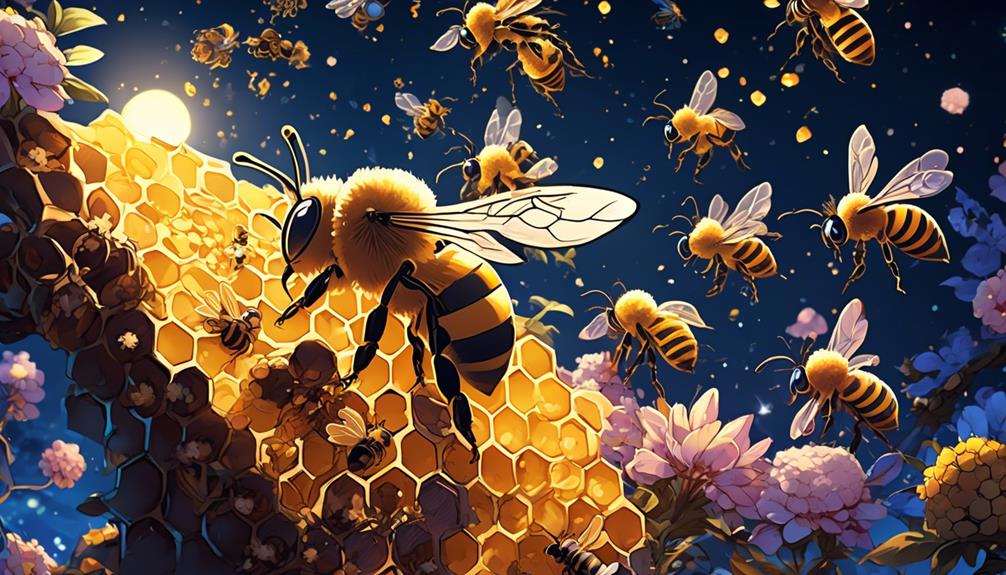
In the fascinating world of bee behavior, the sleep patterns of these industrious insects reveal some intriguing facts worth exploring. As you delve deeper into this subject, you'll discover that bees, like humans, require sleep for survival and optimal functioning. They actually sleep 5 to 8 hours a day, usually during the night.
Bees exhibit a unique sleeping posture, hanging upside down in the hive, often in groups. The younger worker bees tend to sleep less, while the older ones show longer periods of sleep, implying an age-related sleep pattern. Moreover, the job roles within the hive also influence the sleep schedules. Forager bees, those who gather nectar and pollen, sleep more than the in-house bees, likely because their tasks are more energy-demanding.
Incredibly, bees don't sleep continuously but in short intervals, mirroring the polyphasic sleep pattern seen in many animals. Surprisingly, they also show signs of sleep deprivation if kept awake, manifested in the form of impaired ability to perform their tasks.
These intriguing facts not only reveal the complexity of bee behavior but also highlight the universal importance of sleep across species.
Frequently Asked Questions
What Are the Potential Effects of Sleep Deprivation on Bees?
If bees don't get enough sleep, their ability to communicate and navigate effectively can be impaired. They might struggle to find their way back to the hive, or to communicate the location of food sources to their hive mates.
Over time, sleep deprivation could also weaken their immune system, making them more susceptible to disease. It's a serious issue as bees play a vital role in pollination, which is crucial for our food supply.
How Can We Determine if a Bee Is Sleeping or Not?
You can determine if a bee is sleeping by observing its behavior. A sleeping bee often holds onto a plant stem with its jaw and remains immobile for several minutes to hours. It'll also fold its antennae down. If it's a honeybee, it may even droop its abdomen.
However, remember that bees don't have eyelids, so don't expect to see them close their eyes. It's all about noting changes in activity and posture.
Is There a Difference in Sleep Patterns Between Different Species of Bees?
Yes, there's a difference in sleep patterns between various bee species. You'll find that honey bees require more sleep than bumblebees, for instance. This could be attributed to their complex social structures and tasks.
However, it's not just the type of bee that influences sleep patterns, but also their roles within the colony. For example, worker bees tend to sleep less than queen bees.
Thus, both species and roles play a part in bee sleep patterns.
Can Bees Experience Sleep Disorders Similar to Humans?
You might find it surprising, but bees can indeed experience sleep disorders similar to humans. Just like us, their sleep can be disrupted by various factors, including exposure to light at night and disturbances in their environment. This can result in symptoms akin to insomnia.
What Are the Evolutionary Reasons for Bees Needing Sleep?
You're curious about why bees need sleep from an evolutionary perspective. Well, it's believed that sleep improves a bee's memory and learning capabilities, necessary for their complex navigational skills.
Sleep also aids in their communication, which is vital in a hive's productivity. Evolution has thus favored bees that sleep as it enhances these essential functions, contributing to their survival and success.
Conclusion
So, you see, bees too need their beauty rest. Their sleep patterns, influenced by age, duty, and environmental factors, are fascinatingly complex.
While not identical to human sleep, bee slumber is crucial for their survival and productivity. These tiny creatures continue to amaze us with their intricate behaviors, reminding us that even in the smallest of beings, there's a world of wonder.
So next time you see a bee, remember, it too needs its zzz's.

